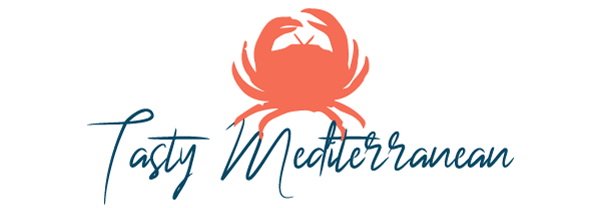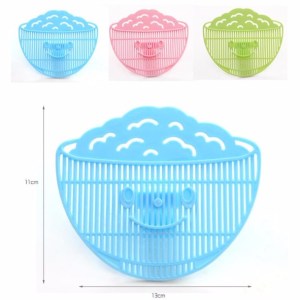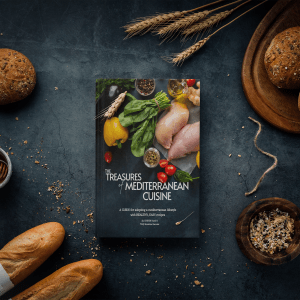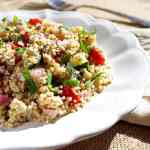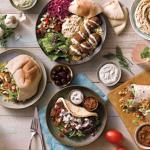Tasting a tagine or couscous is a real gustatory pleasure! As a bonus, just like Mediterranean cuisine, that of the Maghreb is a concentrate of benefits for your shape and your diet thanks to the good products that it puts in the spotlight
- On the nutrition and intake side, it is a very balanced cuisine: semolina, legumes, vegetables in each dish, meat or fish in the right dose. Nothing to complain about.
- Olive oil, omnipresent, would be the best for our arteries.
- Dried fruits provide fast energy, magnesium, and potassium.
- As for spices and aromatics, such as cumin, coriander, or turmeric, they are a good source of minerals and also have anti-inflammatory properties. Just like harissa!
Direct benefits on morale
And that’s not all. In addition to its nutritional advantages, Maghreb cuisine is also a great idea to warm up the atmosphere: ideal for large tables, it can be shared with family or friends in a gourmet way. These are also flavors that make us travel: normal, Maghreb cuisine is at the crossroads of Arab-Andalusian and Berber influences.
Cooking as in the Maghreb, the essentials
To start making typical Maghreb dishes, whether Moroccan, Tunisian or Algerian specialties, there are necessarily “rules” to know and products to have on hand. Approach, we give you the basics.
- Semolina.
You are not taught anything. But did you know that you need two types of semolina? Medium and fine, we “roll” by hand to obtain the desired texture.
- Candied lemons.
It’s simple, you can find them everywhere: in tagines, pastries, salads… You will find them in specialized grocery stores or in the supermarket.
- Herbs and spices.
In this area, treat yourself! Saffron, paprika, cumin, turmeric, but also ginger, dill, parsley, coriander, oregano, anise, ras el-hanout… everything passes there, for a festival of flavors and mixtures. Add rose or orange blossom water, and you’re ready!
- Broths.
They serve as a link to many dishes and perfume all oriental cuisine. So, when you can, consider making your own broths, or use the commercial ones! Everything is good in the broth!
- Marinades.
The secret of tender and deliciously fragrant meat and fish? The marinade, of course! Make it a habit to coat your dishes with a mixture of oil, spices, grass, honey, and garlic, to be left on for several hours. And enjoy the result and the fragrances concentrated in your dishes.
Typical Algerian Foods
Algeria is the largest country on the African continent, in its territorial extension is one of the most beautiful deserts in the world which is the Sahara desert. This country has landscapes and attractions. As for its culture it has been greatly influenced by the Muslim religion, so much so that most of the population of this country are Muslims.
In terms of gastronomy it has a great Turkish, French, Arabic and Mediterranean influence, it is characterized by having strong and spicy flavors due to the large number of spices they use in their preparations, their meals in general are based on vegetables, cereals, vegetables.
- The Berber Couscous
This is considered the traditional dish of Algeria, Tunisia and Morocco but each one maintains its special touch, it is made from hard wheat semolina, which when cooked in chicken or beef broth becomes balls of approximately one millimeter in diameter, it is regularly served accompanied by meat and vegetables.
- Chorba
It is a soup that is very typical of Algeria, the term “chorba” refers to a mixture of spices that it carries in its preparation. It also contains ingredients such as chicken, tomatoes, onions, noodles, chickpeas, some vegetables such as zucchini, sweet potato and carrot.
- Harira
This soup, highly appreciated for being used to break the fast during the days of Ramadan for its great caloric intake, is made with lamb or beef, legumes and tomato, seasoned with black pepper, coriander and ginger, and is usually accompanied with dates.
- Bourek
It is a typical and famous food of this country, they are a kind of rolls or fajitas, stuffed with beef and other ingredients such as onions, eggs, parsley, cinnamon and pepper. With all these ingredients a kind of stew is made that will be filler for a very thin and crispy dough that will be varnished with eggs, to then be fried or baked. They are preferably eaten alone or accompanied by a fresh salad.
Typical Tunisian Foods
We go on a gastronomic trip to Tunisia, a country full of flavor and adventure. The typical food of Tunisia is Mediterranean and as it can not be otherwise, it consists of fresh foods such as vegetables, cereals, legumes, lamb, chicken, or beef, in addition to a large number of aromatic herbs and spices.
It also reflects its rich history: there are Berber, Arab, Jewish and Andalusian influences, as well as a mix of Turkish, Italian, and French cuisine.
- Couscous
Couscous is a staple food in most Maghrebi cuisines. It is known as the national dish of Tunisia, however, it is also popular in countries such as Libya, Morocco, Algeria, and Mauritania. Tunisian couscous is one of the countless variations of this delicious and versatile dish.
Couscous is made from small balls of durum wheat semolina that are crushed and steamed.
- Brik
Tunisian brik is a very popular dish that incorporates a puff pastry stuffed with a variety of salty ingredients such as egg, tuna, meat, etc. Tunisian brik is made from layers of dough achieving a crunchy texture and is served hot accompanied by lemon.
- Ojja with Merguez
The ojja (or shakshuka) with Merguez is a delicious and typical Tunisian food, also popular in the Maghreb and the Middle East, which is prepared with tomatoes and peppers boiled over low heat in which eggs are added to be poached at the end of cooking.
Typical Moroccan Foods
Morocco is a vibrant country, as you can see in its people, its dances and its music, but above all in its food. Moroccan gastronomy really excites me. Each dish fills our palate with a multitude of exotic and familiar flavors, making each of our meals an authentic travel experience.
The best advice is to try everything you can and see, the skewers, nuts, orange or beet and orange juices, its great variety of sweets.
- Couscous
Couscous (wheat semolina seed) cooked and accompanied by vegetables, lamb meat, beef or chicken, is one of the most traditional dishes, which are usually prepared at home on Fridays, their day off, usually dedicated to praying in mosques, going to the hammam and walking with families.
It can be prepared with a multitude of ingredients, raisins, legumes, etc. but I advise you, especially if you travel during the summer, the saykout couscous, with whipped milk and butter, which is served fresh, and will give you a lot of energy.
- Tagine
The Tagine is another of the dishes that you will find everywhere. Like couscous, you can eat it at a fairly cheap price in any restaurant, and the amount is usually considerable, so it can be shared between two.
This delicacy owes its name to the container in which it is prepared, a clay casserole with a conical lid, and there are different varieties among which I would highlight the Tajine de Cordero with legumes, almonds and plums, seasoned with cinnamon or saffron, and the Tajine de Pollo, with lemon, olives and a very spicy spicy tomato sauce.
- Bastilla
Bastilla (bastil·la بسطيلة) has been the great gastronomic discovery of my trip to Morocco, although it can also be found in Algerian or Tunisian food. Without a doubt, I recommend that you do not forget to taste the perfect balance it offers between sweet and salty.
It is a very elaborate dish, with layers of puff pastry filled with slices of chicken or pigeon meat, interspersed with almond paste, all baked and seasoned with cinnamon and icing sugar.
- Eggplant Zaalouk
Eggplant zaalouk is one of the typical and delicious salads of Morocco, especially from the city of Fez, and is also known as eggplant caviar.
The dish consists of eggplant boiled and cooked with a tomato and garlic sofrito, seasoned with cumin, sweet red paprika, and lemon juice. All this is allowed to cool and black olives, chopped cilantro, olive oil, salt, and ready-to-eat are added!
